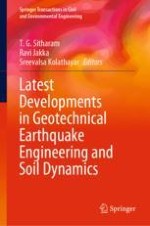This volume brings together contributions from world renowned researchers and practitioners in the field of geotechnical engineering. The chapters of this book are based on the keynote and invited lectures delivered at the 7th International Conference on Recent Advances in Geotechnical Earthquake Engineering and Soil Dynamics. The book presents advances in the field of soil dynamics and geotechnical earthquake engineering. A strong emphasis is placed on proving connections between academic research and field practice, with many examples, case studies, best practices, and discussions on performance-based design. This volume will be of interest to research scholars, academicians and industry professionals alike.
